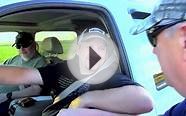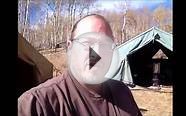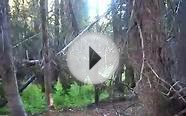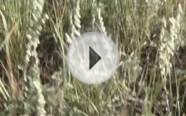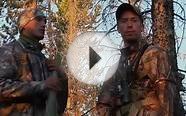Colorado Bow hunting season
 I received an email from a reader asking about the best time to bow hunt elk. Specifically, what portion of Colorado’s archery season – basically the month of September – would be best? He writes…
I received an email from a reader asking about the best time to bow hunt elk. Specifically, what portion of Colorado’s archery season – basically the month of September – would be best? He writes…
“Muzzleloader loader season in the middle of September, which we are sure we to avoid. Would you go the week before muzzleloader and hunt animals that haven’t been hunted or pressed at all, but are less into the rut (plus better chance for good weather); or would you go the week after muzzleloader and hunt animals that have been hunted but at more into the rut?”
There’s a lot of variables in his question, which is good – because there are truly a lot of variables to consider the portion of archery season to hunt.
First, let me say that elk can be killed at any point during the season, and that there are potential advantages and disadvantages to hunting during the different portions of the season. With that said, my personal preference would be to hunt the later portion of the September. Here’s why…
Definitely Avoid Muzzleloader Season
But the truth is, I wouldn’t necessarily rule out muzzleloader season altogether. It’s a generalization (but probably a fair one) to say that the majority of muzzleloaders typically won’t work as hard as dedicated bowhunters that are willing to hike-in a ways. Keep in mind, though, that just because you’re going in deep doesn’t mean you won’t run into muzzleloader hunters that have the assistance of horses, and/or are hunting with a guide or via a guide-provided drop camp. The unit that Jerud and I hunted required quite a few points to draw a muzzleloader tag, which kept some of the “casual” hunters away. But it also meant that many of the hunters that did use those hard-earned points and draw a tag were willing to spend money to have the assistance of a guide (at least to pack them in).
Looking at the draw requirements of a muzzleloader tag for the unit you are hunting is a very important consideration if you are considering bowhunting during a portion of the muzzleloader season. If it is a unit that gets hit with a lot of muzzleloaders hunters, then it probably is best to avoid that portion of the season. But if there is a limited amount of muzzleloaders, don’t feel like you have to rule-out that week of the season; just be aware that you have to deal with…
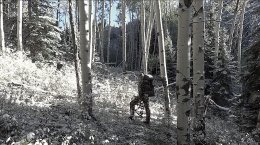 Hunting Pressure
Hunting Pressure
In a perfect world, we could all hunt un-pressured uneducated animals. But that’s not reality. In almost every place that you and I have hunted or will hunt, the animals have been pressured in some way. Let’s embrace that reality and use it to our advantage. How do we do that?
Well, I certainly don’t have all of the answers, but I think the first and most important step is to think like a hunted animal, and not just a hunter. If most hunters would do blank, then what would the animals do in response. And if most hunters are doing blank, then why in the world would we try those tactics too?
Regardless of the time of year that one chooses to bow hunt elk, there will be pressure from other hunters. So think like those hunters and then do something else.
It’s also worth mentioning that pressure from other, non-hunting, human activity can be a factor. This is especially true earlier in the archery elk season, when there are hikers, backpackers, climbers, campers, and a whole host of people enjoying the long Labor Day weekend in the outdoors — which also happens to be during the beginning of archery elk season!
There is always some form of pressure on the animals and competition from other hunters (and outdoor enthusiasts). Accept that fact and hunt accordingly.
What is “Good” Weather?
What’s good weather for human pleasure and good weather for animal activity and hunting success are often two different things. The early portions of archery elk season might offer “good weather” if one is seeking moderate temperatures, comfortably cool nights, and wants to avoid the probability of winter precipitation, but that’s not necessarily great for elk hunting.
The problem with the “good weather” in the early season — and by that I mean the comfort of warmer temperatures — is the fact that it makes keeping meat cool and safe in the backcountry an increasingly difficult proposition. Packing-out an elk is likely going to take longer and be more difficult that you’re imagining, and warm temperatures will only make the challenge that much greater.
On the flip-side, hunting in the later portion of the archery elk season can bring winter precipitation and bitterly cold temperatures in the high-country. Be prepared for that, and think through the logistics (gear, travel, etc.) of dealing with potential storms. In 2013, for example, I hunted the last week of the season and faced snow, sleet, ice, and temperatures down to 20-degrees. If you can handle it, the cooler weather of the later season is better for hunting, than the “good weather” of the early season.
You might also like
